
Gretchen Halverson is the Media and Technology Assistant at the Minneapolis Institute of Art.
 The reinstallation of the African galleries at the Minneapolis Institute of Art (Mia) in 2013 involved the drastic reduction in the number of objects on display. Less to see, less to learn? On the contrary. The new presentation resulted in reinvigorated visitor engagement and ushered in an opportunity to seek new interpretative strategies. While conventional solutions were incorporated, like using cases that allowed for 360 degree views that reveal the richness and complexity of the object as a whole, a cross-functional team (including curatorial, education, and technology) leveraged digital platforms as a means to dig into the stories and details that even a long form label could not provide. Enter Art Stories.
The reinstallation of the African galleries at the Minneapolis Institute of Art (Mia) in 2013 involved the drastic reduction in the number of objects on display. Less to see, less to learn? On the contrary. The new presentation resulted in reinvigorated visitor engagement and ushered in an opportunity to seek new interpretative strategies. While conventional solutions were incorporated, like using cases that allowed for 360 degree views that reveal the richness and complexity of the object as a whole, a cross-functional team (including curatorial, education, and technology) leveraged digital platforms as a means to dig into the stories and details that even a long form label could not provide. Enter Art Stories.
Art Stories is a digital storytelling platform, developed at Mia, that offers a deep dive into individual objects and themes. The experience offers visitors a moment to lean back and learn about the objects they have seen on their visit or ones that they might decide to visit next. Art Stories aim to reveal the abstracted, obstructed, or unexpected stories present in so much of Mia’s collection. The basis of an Art Story is simple. Present an object, point out the details that enliven it, and offer information related to that story. Give visitors new entry points to discover and learn and they will stay longer, they will engage more fully, and they will remember details, subtle and stupendous, alike.
Skip over related stories to continue reading articleEvaluation from Art Stories, both in the African galleries and later across Mia, revealed some extraordinary results. Visitors who used Art Stories explored more of Mia. Of those that used the platform, 27% explored new objects, 21% explored new galleries, and 48% of visitors engaged with it more than once during their visit. Perhaps even more encouraging was the stickiness of the content. Almost one-third of the individuals interviewed about their experience in the galleries, weeks after their visit, still recalled specific stories they read on Art Stories.
This research helped to inform the expansion of Art Stories to include over 100 objects throughout the collection, featured on tablets across 25 locations throughout the museum. A wild success, right? Yes and no. Visitors have continued to engage with Art Stories and additional stories have been added to the platform. But getting those stories uploaded to the platform– cumbersome, at best, throw your computer out the office window, at worst. The authoring interface, originally built as a custom WordPress plugin, was inflexible, breaking due to updates not applying to the custom site, and not nearly as user-friendly as desired. It also presented challenges for sharing. We had a few museum partners try the platform for their own exhibitions, but the custom build was sometimes challenging to adapt to new use cases or required too much technical support to sustain.
So in 2017 when a call for proposals was announced from the Knight Foundation specifically requesting projects from museums, Mia proposed that the platform running Art Stories should be rebuilt with flexibility, shareability, and usability in mind.
Mia was generously awarded a grant to make it happen and since July 2017, we’ve been hard at work creating just that kind of platform. It’s called Lume (read about how we decided on that name on our GitHub blog document) and we want you to use it along with us, and collaborate to make it better for the field. We want you to tell the stories of your own museum’s objects. And we want you to be able to do that with ease, sharing all the nuanced and necessary information that those amazing objects deserve. And we want you to get those stories to your visitors fast– hot off the proverbial press– so that they can spend more time looking and learning, retain more of that information, and be just as fascinated by those objects as you are. Need more reasons to use Lume? Here are three.
- It’s free and easy. Yes, really. We know the power of telling these stories and wanted to make sure others could do it, too. With the generous support of the Knight Foundation, we’ve been able to do just that. Can you make a PowerPoint presentation? Then you can use Lume! How is it different (read: better and more suited for museum use) from a PowerPoint presentation? It features easily uploadable high-res and zoomable images. It allows you to display those rich details in an easily digestible format, and it’s web-based so stories can be viewed and displayed from any internet browser. Not to mention it looks really, really good. No need to get the design team involved– just upload your visual asset (object photo, resource image, or video), add some text, and voila! Oh, and no tech team required…unless…(you’ll want to keep reading).
- It’s flexible. Want to create different kinds of stories? There are a number of templates to choose from in order to meet your needs. Want to hook it up to your institution’s object management or data management systems? Easy custom API connections are built into the tool so no need to update your information in more than one place. Don’t know what an API is? No worries. You can create a story to engage your visitors, with or without complex data connections.
- The ROI is there. Our evaluation data suggest that people spend more time in the galleries, remember more, and it makes their visit more enjoyable. The startup “cost” requires no more than creating a free user account with an email address and adding your story, and you can start testing its effectiveness at your institution right away since all it takes to display your story is a simple URL.
If you’re interested in learning more, we’d love to chat. We’re looking for beta testers now and will be rolling out the full platform this fall. So give us a shout at lume@artsmia.org. We’d love to help you tell your stories, too.
About the Author
Gretchen Halverson works at the Minneapolis Institute of Art supporting the Department of Digital Strategy Implementation. She contributes to initiatives across the museum that leverage technology as a means to illuminate, contextualize, and enliven Mia’s collection.


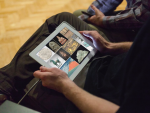
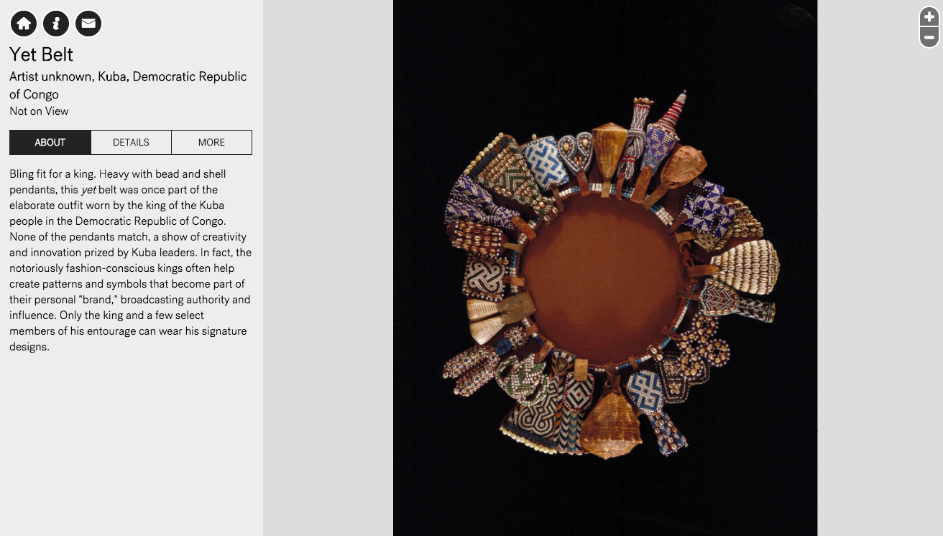
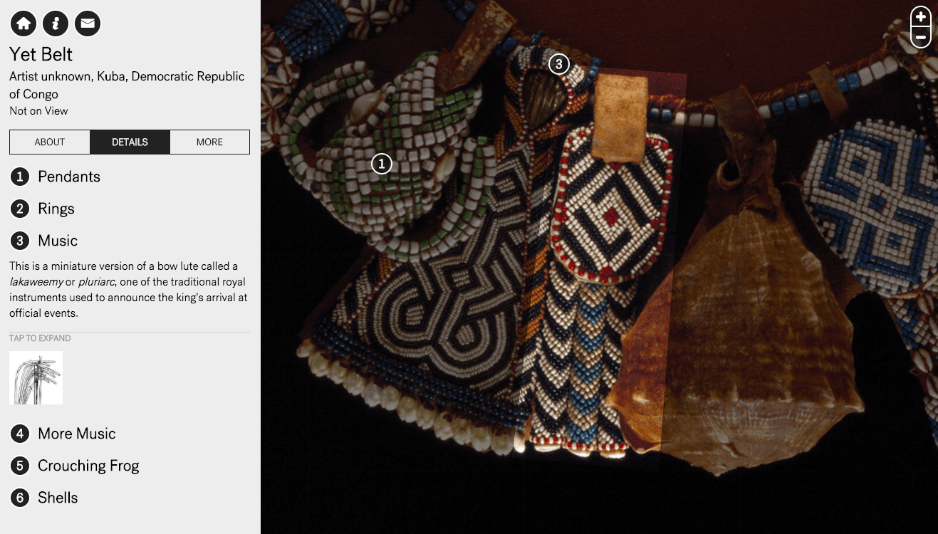
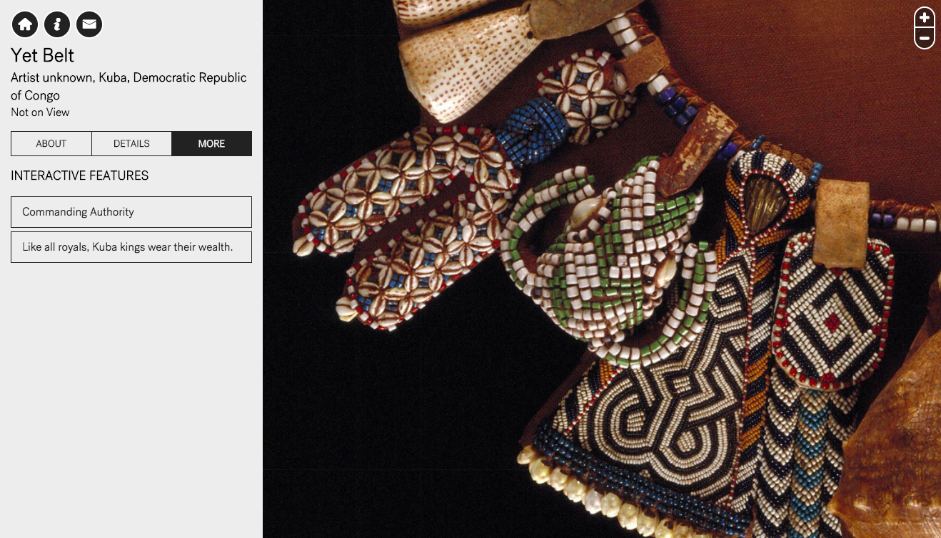







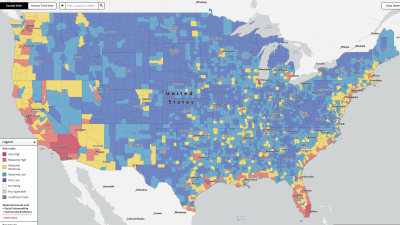
Comments